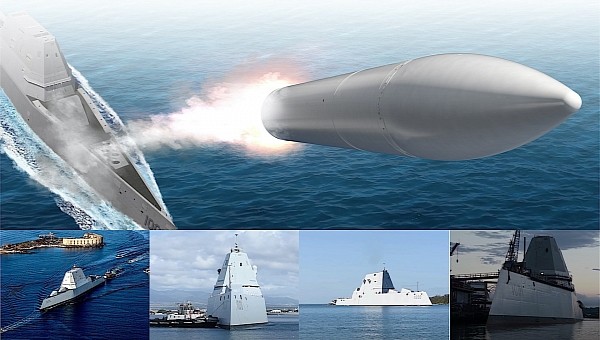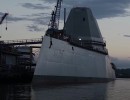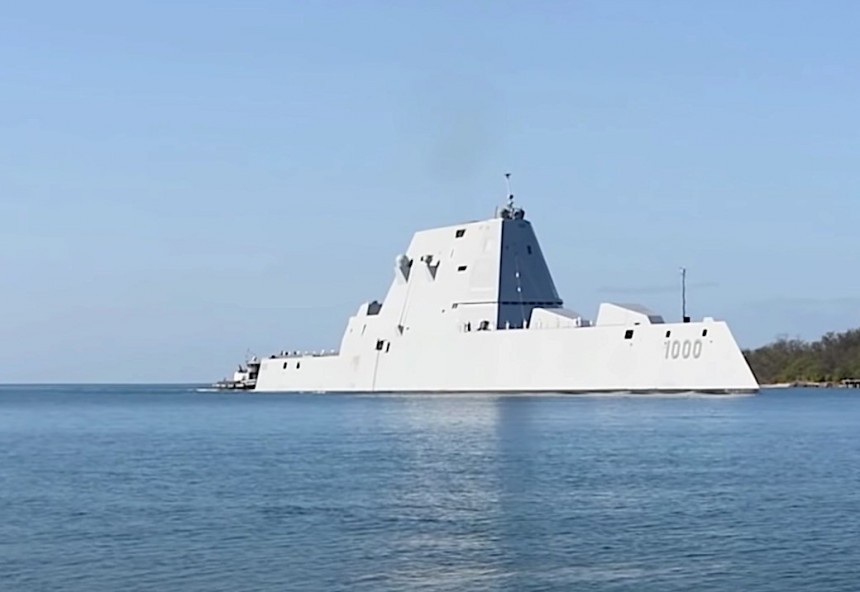The U.S. Navy is considered the most powerful naval force in the world. Sure, it may be second to China in terms of number of ships, but as far as firepower is concerned, nothing beats us Americans.
That doesn’t mean everything the Navy does is an instant hit or happens as expected, though. Used to roll out advanced ships for whatever needs it has, the military branch does fail from time to time in its endeavors. Like it kind of did with the Zumwalt class of stealth destroyers.
Zumwalt was first penned in the 2000s as a floating weapons platform for the new millennium. Initially, the Navy planned to have a fleet of 30 such weirdly shaped vessels (a shape dictated by the need to be invisible to enemy detection means), but the huge price of each destroyer kind of ruined those plans.
At the time of writing, the Navy does not plan to have more than the three examples of these things already made: the USS Zumwalt (DDG-1000, active), the USS Michael Monsoor ((DDG-1001, in commission), and the USS Lyndon B. Johnson (DDG-1002, still under sea trials). Each comes with a cost, including research and development, of about $7.5 billion, with an extra $1.68 billion handed last year to Raytheon Missiles & Defense for a five-year contract for “activation, sustainment, and modernization.”
Officially, these things have not yet seen active duty in the proper sense, with the inaugural fleet employment taking place in September 2022, when the flagship USS Zumwalt sailed with the 7th Fleet for the first time. Yet the small family will play a very important role in the Navy’s modernization plans - it will be the first to receive something the Navy and defense contractors call Conventional Prompt Strike (CPS). In words we can all understand, hypersonic weapons.
It’s been known for a while that’s going to be so, but it was only last week when Lockheed Martin announced it’s been selected to integrate CPS into the Zumwalts, starting with the flagship. CPS is essentially a program meant to develop hypersonic boost glide weapons (meaning missiles that can fly at speeds of Mach 5 and above, hence almost impossible to intercept) for use in surface ships.
Lockheed Martin is at the receiving end of a $2 billion contract (all options included) for these things, covering the supply of the launcher systems, weapon control, and integrated missile components, among others. As per the Navy, the Zumwalt destroyers will have these hypersonic weapons ready for war by the middle of the decade, providing "the nation's first sea-based hypersonic strike capability."
At the time of writing, the destroyer class carries with it into the world's seas two sonar arrays, a missile launcher, and two 155 mm guns that can hit targets located 72 miles (116 km) away.
Zumwalt was first penned in the 2000s as a floating weapons platform for the new millennium. Initially, the Navy planned to have a fleet of 30 such weirdly shaped vessels (a shape dictated by the need to be invisible to enemy detection means), but the huge price of each destroyer kind of ruined those plans.
At the time of writing, the Navy does not plan to have more than the three examples of these things already made: the USS Zumwalt (DDG-1000, active), the USS Michael Monsoor ((DDG-1001, in commission), and the USS Lyndon B. Johnson (DDG-1002, still under sea trials). Each comes with a cost, including research and development, of about $7.5 billion, with an extra $1.68 billion handed last year to Raytheon Missiles & Defense for a five-year contract for “activation, sustainment, and modernization.”
It’s been known for a while that’s going to be so, but it was only last week when Lockheed Martin announced it’s been selected to integrate CPS into the Zumwalts, starting with the flagship. CPS is essentially a program meant to develop hypersonic boost glide weapons (meaning missiles that can fly at speeds of Mach 5 and above, hence almost impossible to intercept) for use in surface ships.
Lockheed Martin is at the receiving end of a $2 billion contract (all options included) for these things, covering the supply of the launcher systems, weapon control, and integrated missile components, among others. As per the Navy, the Zumwalt destroyers will have these hypersonic weapons ready for war by the middle of the decade, providing "the nation's first sea-based hypersonic strike capability."
At the time of writing, the destroyer class carries with it into the world's seas two sonar arrays, a missile launcher, and two 155 mm guns that can hit targets located 72 miles (116 km) away.







